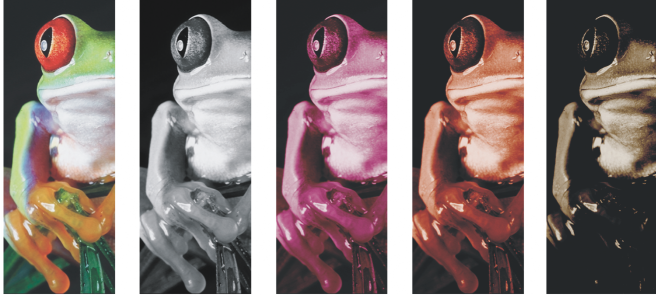Unveiling the Artistry: A Comprehensive Exploration of Converting Bitmaps to Duotones in CorelDRAW

Introduction: CorelDRAW, a cornerstone in the world of graphic design, continues to be a go-to platform for creative minds seeking versatility and precision. Among its myriad features, the ability to transform bitmaps into duotones holds a special place, allowing designers to infuse their projects with a captivating and nuanced aesthetic. In this extensive article, we embark on a journey into the realm of duotones in CorelDRAW, unraveling the intricacies of the process, discussing advantages, and offering insights into achieving stunning results.
Understanding the Essence of Duotones: Duotones, characterized by the use of two contrasting colors, add a layer of sophistication and depth to visual compositions. This technique, rooted in the world of printing, has evolved into a versatile design tool. By combining two distinct colors, designers can create images that transcend traditional black-and-white or full-color representations, achieving a dynamic and visually engaging outcome. CorelDRAW’s seamless integration of duotones provides designers with a powerful means to experiment with color combinations and evoke specific emotions within their audience.
Step-by-Step Guide to Converting Bitmaps to Duotones:
- Import Bitmap Image:
- Start by importing the bitmap image into your CorelDRAW workspace. Navigate to “File” > “Import” and select the image you wish to transform into a duotone.
- Select Bitmap:
- Click on the imported bitmap to activate the necessary tools for further adjustments.
- Access Bitmap Color Adjustment Options:
- Head to the “Bitmaps” menu and find the “Adjust” submenu. Locate the “Duotone” or “Duotone Options” feature, depending on your CorelDRAW version.
- Choose Duotone Colors:
- CorelDRAW typically allows users to choose the two colors that will make up the duotone. Experiment with different color combinations to achieve the desired visual impact.
- Adjust Tone Curve and Contrast:
- Fine-tune the duotone effect by adjusting the tone curve and contrast. This step ensures that the duotone enhances the desired aspects of the image while maintaining a harmonious balance between the chosen colors.
- Preview and Refine:
- Preview the duotone effect and make any necessary refinements. CorelDRAW’s real-time preview feature allows designers to instantly see the impact of their adjustments.
- Apply Duotone Effect:
- Once satisfied with the duotone composition, apply the effect to the bitmap image to complete the transformation process.
Advantages of Duotone Conversions:
- Enhanced Visual Impact:
- Duotones can significantly elevate the visual impact of an image, making it more striking and memorable compared to traditional color or black-and-white representations.
- Subtle Elegance and Sophistication:
- The use of two carefully selected colors imparts a sense of subtlety and sophistication, allowing designers to convey complex emotions or messages with finesse.
- Print Reproducibility:
- Duotones, originally conceived for print, maintain their charm in the digital age and remain highly reproducible in both print and online mediums.
- Artistic Expression:
- Designers can leverage duotones as a powerful tool for artistic expression, experimenting with color combinations to achieve unique and visually captivating results.
Considerations and Potential Challenges:
- Color Selection Significance:
- The choice of duotone colors is crucial and should align with the intended mood, message, or theme of the design. Designers should consider the psychological impact of each color.
- Balance and Contrast:
- Achieving the right balance between the two duotone colors is essential. Designers must ensure that the contrast enhances the image without overpowering or diminishing its visual appeal.
- Print and Display Consistency:
- Duotones may appear differently when printed compared to their on-screen representation. Designers should test prints to ensure the desired effect is maintained across various mediums.
Conclusion: In conclusion, CorelDRAW’s capacity to transform bitmaps into duotones stands as a testament to its commitment to providing designers with powerful and intuitive tools. This comprehensive guide has navigated the step-by-step process, advantages, and considerations associated with embracing duotones in CorelDRAW. As designers continue to explore the depths of creative expression, mastering the art of duotone conversions opens up new possibilities for conveying emotion, creating memorable visuals, and leaving a lasting impact. Whether aiming for subtle elegance, dynamic contrast, or artistic experimentation, the journey into duotones within CorelDRAW is a captivating exploration of color and composition.




